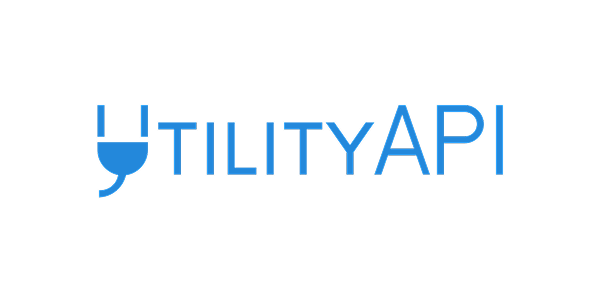Market research means analyzing data about the customers and market trends relevant for you. Tailor-made for your business, it shows you how a company of your size, brand, business model, precise product, and service offerings fits into a specific market. With customized market research, you’ll have in the palm of your hand a data-informed compass that you can act on right away.
The value of that compass is overwhelming. McKinsey Global Institute found that data-driven firms are 23 times more likely than their competitors to acquire customers, 9 times more likely to keep them, and 19 times more likely to be profitable.
Now that we’ve dazzled you, let’s get specific about the benefits of customized market research. We’ll draw on examples from the clean energy industry (DG+’s bread and butter), but rest assured, companies in any sector can reap the fruits of tailor-made market analysis.
At DG+, our process starts wide and gradually narrows down to hone in on your specific audience to create a marketing and sales strategy customized for your organization. Each step further refines and adds value.
- Navigate a varied state policy context
- Map utility and local regulatory landscape
- Gain insights on competitors and potential partners
- Find and understand your customers
1. Navigating State Policy
The first big benefit of customized market research is understanding the range of incentives (and disincentives) contained in state-level policy.
Policy at the state level can be a huge driver for a market’s growth and continued success, so understanding it can help shape your own business’ short- and long-term strategies. The DG+ EV Policy Scorecard, for example, shows state-level policy support – including incentives and funding structure – for the EV sector and consumer adoption. This type of market research that compares relevant data in different geographic areas can be pivotal for EV companies looking for new markets to enter.
In another example, utility-scale solar developers looking to invest in projects in a new state should understand that state’s Renewable Energy Portfolio Standard (RPS). An RPS requires the state’s utilities to achieve a certain percentage of renewable energy within a given timeframe. A deep understanding of a state’s RPS can help you identify market demand, access financial resources, and anticipate future trends in that state’s solar market.
Another big policy variable is tax incentives. The availability and amount of tax credits, rebates and exemptions differ widely depending on the state, county, and city. Once you’re able to compile and make sense of this data, it can help you identify the markets whose incentives will maximize your return on investment.
We should also mention the value of understanding the political contexts surrounding your industry. This is often underappreciated in most discussions of market research. If the product, service, or project you offer is politically controversial, you’ll need to take this risk seriously. For example, utility-scale solar projects often face heated resistance from local residents, farmers, and property owners. Becoming acquainted with the political context and the concerns of local stakeholders can help you refine your messaging, shape your project in a way that every stakeholder can benefit, and ultimately win the trust of the local community.
2. A Map of the Regulatory Landscape
Navigating complex regulatory landscapes is an unavoidable reality in many industries. Complying with regulations often pose formidable entry costs, not least because they differ by region, state, and even city. Customized market research can be your trusted map when entering a new market.
If you’re a clean energy developer, some of the most obvious regulatory hurdles include the permitting and siting processes, complying with zoning codes, and interconnection with the grid. Meeting each of these requirements is a multi-step process, and knowing what rules to comply with will help you avoid delays and increased costs, and reach customers as quickly as possible.
Another regulatory factor that clean energy companies should consider are the retail prices of electricity in each geographic area. Since electricity prices are regulated, and there are often multiple utility companies that serve the same area, leveraging this data will help inform your strategy. You can reference DG+Design’s map that shows each utility’s retail electricity price, customer count, and sales in every US zip code.
3. Intel on Competitors and Collaborators
Narrowing down further from policy and regulation, market research can also identify your competitors and potential collaborators.
Competitive analysis compiles a list of companies offering the same or similar products and/or services as you, and other relevant information about them. At the most basic level, it shows you the number of competitors, their size, offerings, geographic reach, and target customers. Digging deeper, it can also reveal harder-to-get information: your competitors’ brand recognition, customer service quality, bankability, and much more.
Insights to be gained from a competitive analysis are profound. The gaps left open by your competitors, the customer segments that they don’t serve, what marketing strategies work and don’t work become plainly visible. By combining competitor and customer analysis, you can understand how to draw customers away from the competition with better products, messaging, prices, etc.
If the competitive analysis also takes a trajectory perspective, rather than only a snap-shot picture, things get even more interesting. What did the most successful competitors do right? What pitfalls held back the less successful ones? Emulate the good and avoid the bad.
In addition to competitors, identifying potential collaborators can have enormous payoffs. Want to enhance your marketing and community engagement campaigns? Local businesses and nonprofits are often closely connected to and highly trusted by their communities. This is particularly true in the clean energy and sustainability space. If you can prove that your business is a trustworthy partner, those collaborators might help you gain more visibility and reach new audiences.
4. Knowing Your Customers
It goes without saying that you need to know everything you can about your customers and people who might become your customers. That information will be the basis for your product offering, marketing strategy, and customer service strategy.
But what does it mean to know your customers? For starters, it means mastering their demographic data. And that means – at a minimum – how many potential customers there are, and key insights about them, such as income level.
For example, if you’re a residential solar installer, you should know that the median solar adopter income skews higher than the national median income, but a growing number of low-to-moderate income people are also fitting solar panels on their roofs thanks to policy incentives. This information, in addition to the number of homes there are in an area, can help you put together a semblance of a marketing strategy: advertise in more affluent zip codes for a potentially more lucrative market, but also appeal to moderate-income areas can bring rewards of a growing market.
Beyond demographic data, we can glean valuable insights by understanding customer tastes. This is the qualitative data about their motivations, emotions and what they pay attention to. How do customers feel about your company’s customer service? About the products that you and your competitors offer? Their websites compared to yours? Hearing directly from people can unlock enormous potential for your marketing and operations.
There’s a lot more to knowing your customers. Suffice to say that the quantitative and qualitative data on existing and potential customers should serve as the foundation for brands’ marketing and customer service strategies. And that, in turn, ties directly back to your company’s profitability – businesses that put customers first are 60% more profitable than companies not focused on the customer.
Getting Started with Customized Market Research
So there you have it – a market research project can set you on the path to becoming a data-driven company with actionable information about the customers, competitors, collaborators, and the regulatory and policy contexts of your market.
–
Interested in gaining data-driven insights for your target markets? DG+ offers market research that can generate customized strategic insights to help your business reach new audiences, fine tune products and services, and outperform the competition. Contact our team to see how we can craft a project to directly suit your organization.















.avif)











